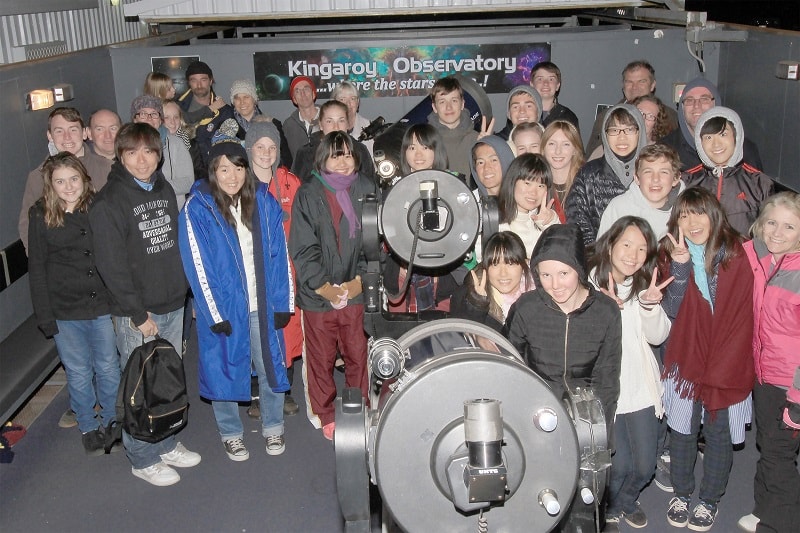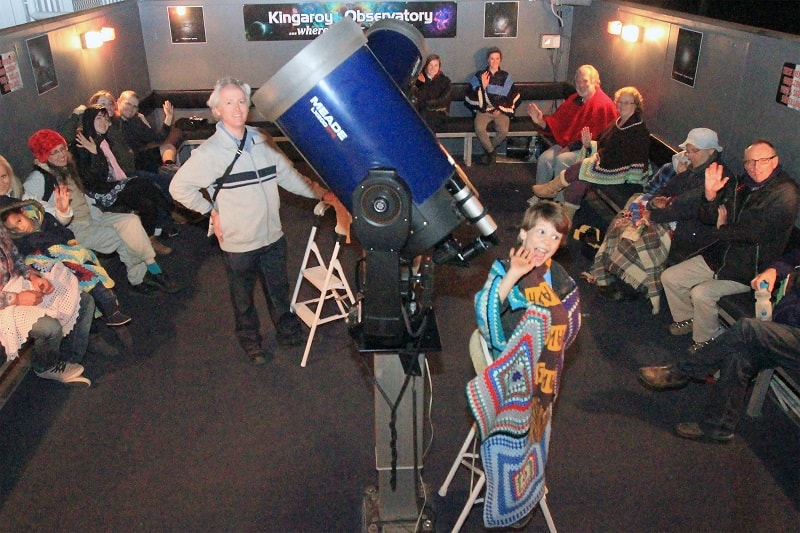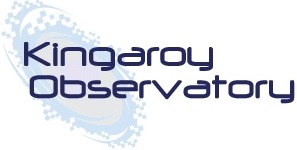Kingaroy Observatory Show Information
Stars & Planets Show
Between late Autumn and end of September each year, peaking in July/August, are the best times to see and photogtaph the Milky Way containing billions of distant Suns (stars) many Constellations, Nebulae, Star Clusters, and Galaxies. The show is suitable for ALL ages 5 years and above.

No shows are done 4 nights before, on and 4 nights after, a Full Moon - just too much moonlight to see a starry-lit night sky. To make a stargazing booking just go to our homepage and you will see a calendar of current and other months of the year each with dates with blue dots. They are the nights there is no moon which allows you to see more stars moustache clusters more neighbourly and more galaxies and binary stars
FAQ
Our night shows only operate on the dates listed in our Booking Calendar on the Home Page.We don't do any night shows 4 nights before, on, and 4 nights after a Full Moon.
Night shows only run when we have clear skies and 4 or more Adults
Yes, bookings are essential for Night shows. Phone. Book online from our Home Page - Booking Calendar with blue dots. They are the Moonless nights whereby you see more stars.
You book online from our homepage booking calendar and you pay cash at the door.
Our min. number for a Night Show is 4 Adults irrespective of children over 5 yrs. Our max. seating is 40 persons
YES! If there's patchy cloud in the sky it's recommended that you call the Observatory 1 hour out from start time.
If the sky clouds up within the first 30 minutes of the show and there is no sign it will clear, you will be offered a refund or given a 3 month rain-check. If the skies cloud up AFTER the first 30 minutes and there's no sign of it clearing, we offer two alternatives: Adjourn to the Star Theatre for an A/V program to finish off the booked session or go home.There are NO refunds.
On moonless nights you get to see to see a lot more of the night skies because the darker it is, the more you see. On these nights we show you through our telescopes, things like double stars, star clusters, nebulae and galaxies.
On the Moon nights you get to see the Moon and planets up close however, star clusters etc, won't look as bright as on a moonless night, but nonetheless you do get to see whatever we can show you in our telescopes. Winter is best to view (and photograph) the Milky Way, Scorpio, Sagittarius and Carina. In Summer Orion, Canis Majoris, Rigel Orionis, the Great Nebula of Orion - M42, and the Large and Small Magellanic Clouds. Check our Show Dates page to plan your night out under the stars.
If you wear glasses for infinity vision leave them on, as the telescopes will be focused for 20-20 vision
In winter, do not wear jeans as cotton will absorb the cold night air and dew. Instead, wear track suit, woollen clothes.
In summer you can wear what you feel comfortable in but bring a coat just in case.
If you keep your head, feet and hands warm, your whole body will stay warm. We supply blankets to keep your lap and shoulders warm.




